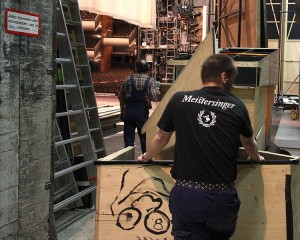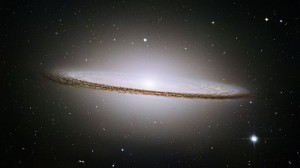 Today, I’m venturing backstage at Last Word on Nothing, a rather frantic place at the best of times. Ann has just published a very cool new book on a group of astronomers who created this beautiful map of the universe, the Sloan Digital Sky Survey. Her book is called A Grand and Bold Thing, and I was curious about Ann’s work on it.
Today, I’m venturing backstage at Last Word on Nothing, a rather frantic place at the best of times. Ann has just published a very cool new book on a group of astronomers who created this beautiful map of the universe, the Sloan Digital Sky Survey. Her book is called A Grand and Bold Thing, and I was curious about Ann’s work on it.
Q: What do you like most about astronomers?
In the first place, I like astronomy itself: you look up in the night sky, and infinity is right there and full of stuff. In the second place, astronomers are devoting their lives and very smart selves to studying all that stuff in infinity and what they study—they don’t like it when I say this—will never conceivably matter or affect us in any way. Aesthetically and spiritually, that’s lovely.
Q: The hero of your book, Jim Gunn, is an amazing and very entertaining character. He says what he thinks, he’s stubborn, opinionated, and he sure as hell gets things done. Tell us about him.
He’d make a good book all by himself. Physically, he looks a little homeless though harmless, and if he walked into my middle-class neighborhood, somebody would ask him if he needed help finding his way back out again. He’s extremely polite and draws you out so kindly that you end up having a good opinion of yourself. That’s unsettling because when you finally get him to talk, you see that while you’ve been vaguely prattling on, he’s been thinking complicated and sharp things which he can explain in the clearest way, and you think to yourself, “why don’t I just shut up now.” And he’s a splendid writer with perfect control of sentence rhythms. And he can write about a thing you’ve haven’t a hope of understanding and somehow you get it. One of his fellow astronomers described Jim’s writing as “clear and simple is the Lord.”
 Q: What exactly is the Sloan Digital Sky Survey?
Q: What exactly is the Sloan Digital Sky Survey?
Surveys of the sky are maps of everything out there. Surveys have been done forever but all the ones in visible light been just photographs which are 1) expensive and affordable only if you’re rich; and 2) are as informative as photographs of aliens from another planet. That is, you can tell that they’re biggish and greenish and have funny spikes, but not their age or composition or environment or behavior. The Sloan was the first survey to be digital, that is, 1) free to anybody with a computer; and 2) done with not only a camera but also a spectrograph so that you can see not only pictures of these aliens but know everything knowable about them.
Q: I know that you loved doing the research on this book. What part of the research did you like the best?
What every science writer loves about the job: finding out about this fascinating world without having to learn the math, and meeting astoundingly smart people who explain it all to you personally.
Q: Was this a hard book to sit down and write?
Compared to other books I’ve written, not hard. The subject was funny and interesting and made me happy to think about. And the story’s structure was obvious from the chronology, and I didn’t have to spend weeks writing it and screwing it up, and writing it wrong a different way, write, screw up, rewrite, repeat until you finally get it right.
Q: You grew up on a farm in the Midwest. Did you always like looking
at the night skies?
Good grief, Heather, I never even thought of it. I’d watch the moon’s phases and try to see constellations but never could. But the most spectacular thing in the sky, the Milky Way, I should have been able to see and I don’t think I even knew it was there. Unlike astronomers who, as kids, wouldn’t go to sleep because they were so enchanted with looking at stars.
Q: What would you most like to write about next?
I’d like to find a couple of scientists working together on something interesting and watch them as they do it and try to get along at the same time.
Upper Photo: The Cologne Opera House. Photo courtesy of Elke Wetzig (User:elya)
Lower Photo: This image of the Sombrero Galaxy is a mosaic of six images taken by the Hubble Space Telescope‘s Advanced Camera for Surveys in May and June 2003 (exposition time: 10.2 hours). Photo courtesy of NASA/ ESA and The Hubble Heritage Team.